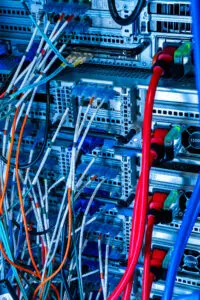With the emergence of publicly available AI, quantum computing, and exponentially faster worldwide internet connectivity, the dynamics of cyber threats continue to shape the cybersecurity landscape, presenting a challenge for individuals, businesses, and governments globally. For example, in March 2024 A U.S. Department of Justice indictment revealed that Chinese hackers targeted several EU members of the Inter-Parliamentary Alliance on China and Italian MPs. The attack was designed to detect IP addresses and the targets’ locations.
Here in Birmingham, AL we’ve seen a tremendous rise in cyber attacks and ransom requests due to technology being compromised. We witnessed a massive cyber attack happen in April of 2023 where a Russian-born cyber attack left Alabama’s Jefferson County Schools crippled with a powerful ransomware attack. Understanding the current challenges in cybersecurity is important for developing equally adequate defense mechanisms that can counter the bad actors in the tech sector. Let’s take a closer look at how cyber threats have evolved over the years past.
Complete Article Outline
- What We’re Seeing In Modern Cyber Attacks
- Targeted Assaults on Important Systems and Key Industries
- Quantum computing is a double-edged sword of innovation and evolving cybersecurity challenges
- Ethics and Privacy in Big Data Analytics
- Collaborative Defense Strategies Uniting Forces Against Cyber Threats
- In Conclusion
What We’re Seeing In Modern Cyber Attacks
In this digital landscape of cybersecurity, the sophistication and diversity of modern cyber attacks have reached higher levels, posing a bigger and harder challenge to organizations across the world. The relentless ingenuity of these threats, with the advancements in technology, has reshaped the threat from a physical to a now almost unseen digital one, now demanding a new and proactive approach to defense strategies.
Cyber Attacks Are Becoming More Sophisticated
Cyber threats have gone beyond the normal boundaries of cyber attacks, evolving into intricately crafted weapons wielded by cybercriminals, state-sponsored groups, and hacktivists alike. The adoption of advanced techniques, including polymorphic malware, file-less attacks, and evasion tactics, has enabled threat actors to bypass conventional security measures and evade detection mechanisms with alarming ease.
Types of Attacks and Tactics
Using different methods of assault in modern cyber attacks just shows how adaptable and resourceful the threat /hackers are in exploiting vulnerabilities across digital systems. From phishing campaigns and social engineering schemes to insider threats and watering hole attacks, cybercriminals leverage a wide array of tactics to infiltrate networks, compromise systems, and extract sensitive data.
Automation with Artificial Intelligence
The integration of automation, artificial intelligence (AI), and machine learning (ML) technologies into cyber attack methodologies has revolutionized this threat in cyber security, enabling threat actors to conduct large-scale, targeted attacks with unprecedented efficiency and efficacy.
Targeted Assaults on Important Systems and Key Industries
The critical infrastructure of these industries, including energy, healthcare, transportation, and finance, have emerged as prime targets for cyber attacks in 2024. In March 2024 Canada pulled its financial intelligence system FINTRAC offline after a “cyber incident” by a currently unidentified attacker. FINTRAC claims the attack does not involve its intelligence or classified systems but declined to disclose further details of the incident. These threats are exploiting vulnerabilities in industrial control systems (ICS), operational technology (OT), and Internet of Things (IoT) devices to disrupt operations, compromise safety, and extort ransom payments. The close connections between critical infrastructure systems make cyber attacks have bigger effects. This highlights the need for strong cybersecurity measures and plans to handle disruptions and financial losses.
.
The Vulnerability of Critical Infrastructure
Critical infrastructures such as energy, healthcare, transportation, and finance have become prime targets for cyber attacks, posing significant risks to public safety, economic stability, and national security.
Energy Sector
The energy sector, encompassing power generation, transmission, and distribution networks, faces escalating cyber threats that can disrupt service delivery, compromise grid stability, and inflict widespread outages with far-reaching consequences.
Healthcare Industry
In the healthcare sector, the proliferation of connected medical devices, electronic health records (EHRs), and telehealth platforms has transformed patient care delivery but also introduced new avenues for cyber attacks targeting sensitive healthcare data and disrupting clinical operations.
Transportation Networks
The transportation sector, comprising air traffic control systems, maritime navigation networks, and ground transportation infrastructure, faces mounting cybersecurity challenges as threat actors seek to disrupt travel operations, manipulate logistics systems, and compromise passenger safety.
Financial Services
The financial services sector, including banks, insurance companies, and fintech firms, remains a lucrative target for cyber attacks due to the vast amounts of financial data, transactional information, and digital assets stored within their systems.
Quantum computing is a double-edged sword of innovation and evolving cybersecurity challenges
Quantum computing represents a groundbreaking technological advancement with the potential to revolutionize encryption, computational power, and data processing. However, the advent of quantum computing also poses significant challenges to traditional cryptographic algorithms, threatening the security of sensitive information and communication channels. As quantum computers grow in capability, the risk of cryptographic compromise through quantum algorithms increases, necessitating the development and adoption of quantum-resistant encryption standards to safeguard digital assets and confidential data from quantum-enabled threats.
Harnessing the Power of Quantum Computing
Quantum computing stands at the forefront of technological innovation, promising never-before-seen advancements in computation speed, data processing capabilities, and encryption methods that have the potential to redefine the cybersecurity platform.
The Threat to Traditional Cryptography
As quantum computers advance in capability and scale, the efficacy of traditional cryptographic algorithms, such as RSA, ECC, and AES, comes under scrutiny due to their susceptibility to quantum attacks that exploit the inherent vulnerabilities of classical encryption schemes.
Safeguarding Digital Assets
The development and deployment of quantum-resistant encryption standards represent an urgent need posed by quantum-enabled threats and safeguarding confidential data, intellectual property, and critical infrastructure assets from quantum attacks.
Collaborative Efforts and Industry Initiatives
In response to the quantum threat that is currently being exposed, business groups, research institutions, and government agencies are leading collaborative efforts to develop quantum-safe cryptography standards, promote quantum security awareness, and facilitate the integration of quantum-resilient technologies into existing cybersecurity frameworks.
Ethics and Privacy in Big Data Analytics
The era of big data analytics and artificial intelligence has given us new opportunities to gain insights, optimize decision-making, and enhance customer experiences. However, the widespread collection, processing, and analysis of vast amounts of personal data have raised ethical concerns regarding privacy, consent, and data protection. Organizations grappling with ethical dilemmas surrounding data usage, transparency, and accountability face mounting pressure to uphold data privacy regulations, cultivate trust with their customers, and demonstrate responsible data stewardship practices in an increasingly data-driven ecosystem.
Managing ethics in large-scale data analysis
In the era of big data analytics and artificial intelligence (AI), organizations are leveraging a lot of data to create practical insights, drive informed decision-making, and enhance customer experiences in ways previously thought to be impossible.
The Power of Data Insights
Big data analytics empowers organizations to harness the power of data to uncover patterns, trends, and correlations that can inform strategic initiatives, optimize operational processes, and personalize customer interactions with unmatched precision.
Ethical Considerations in Data Usage
The rapid expansion in the methods of collecting data, agreements for sharing data, and strategies for profiting from data have raised ethical concerns surrounding individual privacy, consent mechanisms, and data protection standards in the context of big data analytics.
Transparency and Accountability
Building trust and credibility with customers, partners, and stakeholders requires organizations to prioritize transparency, accountability, and ethical decision-making in their data analytics initiatives.
Following rules and managing data
Understanding complex rules easily governing data privacy, cybersecurity, and consumer rights requires organizations to adopt a proactive approach to compliance, risk management, and data governance.
Collaborative Defense Strategies Uniting Forces Against Cyber Threats
Within the evolving cybersecurity landscape, the adoption of collaborative defense strategies has emerged as a pivotal approach to combating cyber threats effectively. Public-private partnerships, industry information-sharing platforms, Threat intelligence groups, and industry-specific forums are key in enabling the sharing of threat intelligence, best practices, and actionable insights to improve shared cyber defense. By bringing in and nurturing a culture of collaboration, knowledge sharing, and joint incident response efforts, organizations can enhance their cyber defense posture, detect emerging threats early, and respond to cyber incidents swiftly and effectively.
Forging Stronger Defenses
In the constantly changing area of cybersecurity, the adoption of collaborative defense strategies has emerged as a cornerstone for organizations seeking to strengthen their resilience against evolving cyber threats.
Public-Private Partnerships
Public-private partnerships serve as a vital conduit for information sharing, dividing up and giving out resources, and mutual support between government agencies, law enforcement entities, and private sector organizations in combating cyber threats.
Industry Information Sharing Platforms
Industry information-sharing communities and platforms, such as Information Sharing and Analysis Centers (ISACs) serve as hubs for sharing useful information on potential dangers, best practices, and incident response insights among industry peers.
Threat Intelligence Consortiums
Threat intelligence consortiums bring together cybersecurity experts, threat researchers, and industry leaders to pool resources, share threat intelligence, and collaborate on cybersecurity initiatives aimed at countering sophisticated cyber threats.
Sector-Specific Forums
Industry-focused forums address specific cybersecurity needs, challenges, and regulatory requirements of distinct industries, such as finance, healthcare, energy, and critical infrastructure, by providing tailored guidance, sector-specific threat intelligence, and industry benchmarks for enhancing cyber resilience.
In Conclusion
The 2024 cybersecurity world faces new tough challenges, including advanced cyber attacks, ethics in data use, and the impact of quantum computing. By working together, using new tech wisely, and sticking to ethical guidelines, organizations can protect themselves and keep trust in a more connected world. Additionally, Cloud Technologies play a crucial role in enhancing security through our cybersecurity services. These services offer robust protection mechanisms, scalable resources for defense, and advanced threat detection capabilities, making it easier for organizations to safeguard their operations against cyber threats.









